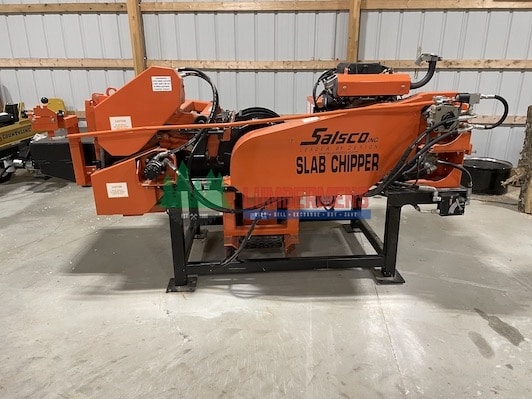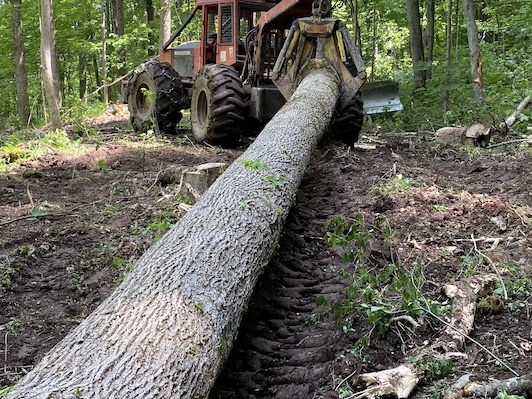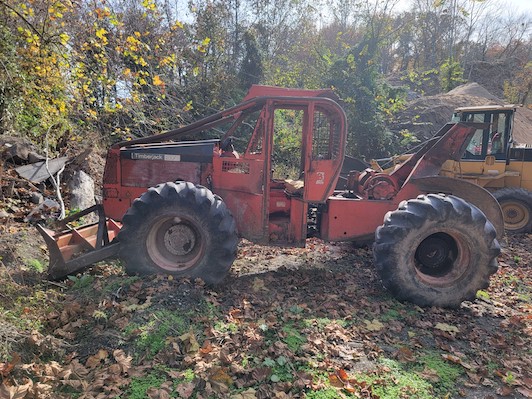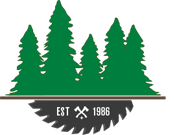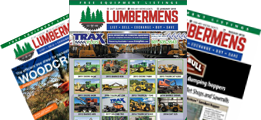As the forestry industry continues to expand, there is a growing demand for used forestry equipment. These machines offer a cost-effective solution for businesses looking to expand their fleet or replace outdated equipment. However, maintaining used forestry equipment is essential to ensure optimal performance, longevity, and safety. In this blog, we will explore comprehensive maintenance […]
A Complete Guide to Choose the Best Forestry Equipment
Are you ready to step into the world of forestry jobs and make a significant impact? If so, choosing the right equipment is your key to success. From breathtaking forests to essential timber processing, having the best forestry equipment is a game-changer. But with a vast array of options available, how do you navigate the wilderness of choices?
Don’t fret! This complete guide is your compass, leading you through the dense forest of information to help you choose the perfect forestry equipment. So, grab your gear, put on your boots, and let’s embark on this exciting journey together!
Overview of Forestry Jobs
Forestry jobs encompass a range of activities, including logging, timber processing, and reforestation. These jobs require specialized equipment to carry out tasks efficiently and safely. From felling trees to transporting logs, each step in the process demands specific machinery tailored to the job at hand. Therefore, understanding the different categories of forestry equipment is essential before making a choice.
Importance of Choosing the Right Equipment
Selecting the right forestry equipment is vital for several reasons:
- It directly impacts the productivity and efficiency of your operations. The right equipment can significantly reduce downtime, streamline processes, and increase overall output.
- Choosing the appropriate equipment ensures worker safety and minimizes the risk of accidents or injuries.
- Investing in high-quality equipment can result in long-term cost savings through improved durability, reduced maintenance, and enhanced performance.
Understanding Forestry Equipment Categories
Forestry equipment can be broadly categorized into four main types:
- Harvesting Equipment
- Processing Equipment
- Transporting Equipment
- Safety Equipment
Each category serves a unique purpose in the forestry industry.
1. Harvesting Equipment
Harvesting equipment is used to fell, delimb, and buck trees. This category includes chainsaws, feller bunchers, harvesters, and skidders. These machines are essential for efficiently harvesting trees and preparing them for further processing.
2. Processing Equipment:
Once trees are harvested, processing equipment is used to convert them into usable timber or wood products. This category includes sawmills, chippers, and grinders. Processing equipment ensures the efficient conversion of raw logs into finished products.
3. Transporting Equipment:
Transporting equipment is responsible for moving logs and timber from the forest to processing facilities or other destinations. This category includes log trucks, trailers, forwarders, and loaders. Efficient transportation equipment is crucial for minimizing delays and optimizing logistics.
4. Safety Equipment:
The Safety should be a top priority in any forestry operation. This includes protective gear such as helmets, gloves, safety glasses, and chainsaw chaps. It is essential to invest in high-quality safety equipment to ensure the well-being of workers.
When it comes to choosing the best forestry equipment, one reputable option that stands out is LumbermensCo. We have a wide range of high-quality forestry equipment, both new and used, including chainsaws, feller bunchers, and harvesters. Our commitment to quality and customer satisfaction makes us a reliable choice.
Assessing Job Requirements
Before choosing forestry equipment, it is important to assess your specific job requirements. Several factors need to be considered during this evaluation process.
- Identifying Specific Forestry Tasks:
Determine the specific tasks involved in your forestry operation. Are you primarily focused on harvesting, processing, or transporting? Understanding the tasks at hand will help you narrow down your equipment options. - Considerations for Different Terrain and Tree Types:
Assess the terrain and tree types prevalent in your work area. Different equipment may be required for hilly terrain, wetlands, or uneven surfaces. Similarly, the size and type of trees being harvested or processed will also impact the equipment needed. - Evaluating Workload and Project Scale:
Consider the scale of your project and the expected workload. Will you be handling large-scale operations or smaller, more specialized projects? This assessment will help determine the appropriate equipment capacity and size needed to meet your requirements.
Factors to Consider When Choosing Equipment
When selecting forestry equipment, several factors should be taken into account to ensure optimal performance and long-term satisfaction.
- Performance and Productivity
Look for equipment that offers high performance and productivity. Consider factors such as cutting capacity, cycle times, fuel efficiency, and the ability to handle various tree sizes. Opt for equipment with advanced features that can improve efficiency and reduce labor requirements. - Reliability and Durability
Forestry equipment operates in demanding and harsh conditions. Choose equipment from reputable brands known for their reliability and durability. Robust construction, quality components, and good warranty coverage are indicators of long-lasting equipment. - Cost and Budget:
Determine your budget and consider the overall cost of ownership. While it may be tempting to opt for cheaper equipment, it is crucial to balance cost with quality and performance. Consider the long-term value and return on investment (ROI) rather than solely focusing on the upfront price. - Maintenance and Service
Evaluate the maintenance requirements of the equipment you are considering. Look for machines that are easy to maintain and have accessible parts. Additionally, check the availability of service and support from the manufacturer or local dealers to ensure prompt assistance when needed. - Operator Training and Skill Requirements
Assess the training and skill level required to operate the equipment effectively. Some machines may require specialized training, while others may be more user-friendly. Consider the availability of trained operators and the ease of training new personnel if necessary.
Balancing New vs. Used Equipment
When choosing forestry equipment, you must decide between purchasing new or used machinery. Both options have their advantages and disadvantages.
Pros and Cons of New Equipment
Pros: New equipment often comes with the latest technology, improved efficiency, and advanced features. It is generally more reliable, backed by warranties, and requires less immediate maintenance.
Cons: New equipment can be more expensive, potentially stretching your budget. Depreciation occurs rapidly during the first few years of ownership. Additionally, it may take some time for user reviews and feedback to become available for new models.
Pros and Cons of Used Equipment
Pros: Used equipment is generally more affordable, allowing you to save on upfront costs. User reviews and feedback for specific models are readily available, providing insights into the machine’s performance and reliability.
Cons: Used equipment may require more frequent maintenance and repairs. It may have limited warranty coverage and may not incorporate the latest technological advancements.
Factors to Consider When Buying Used Equipment:
- Equipment Condition
Inspect the equipment thoroughly to ensure it is in good working condition. Check for signs of wear and tear, test all functionalities, and assess maintenance records if available. - Maintenance and Service History
Request the maintenance and service history of the machine to understand its past performance and any potential issues. A well-maintained machine is more likely to offer reliable service. - Hours of Operation
Consider the number of hours the equipment has been operating. Lower hours generally indicate less wear and tear. However, the overall condition of the machine should be the primary consideration.
Making the Final Decision
When making the final decision, consider the following steps to ensure you choose the best forestry equipment for your needs:
- Comparing Equipment Options:
Narrow down your options and compare different equipment models based on the factors mentioned earlier. Evaluate their specifications, performance, features, and pricing. - Obtaining Multiple Quotes and Estimates:
Reach out to different suppliers and manufacturers to obtain multiple quotes and estimates for the equipment you have shortlisted. This will help you gauge market prices and negotiate for better deals. - Considering Long-Term Value and ROI:
Look beyond the upfront costs and consider the long-term value and return on investment of the equipment. Analyze the expected lifespan, maintenance costs, resale value, and overall impact on your operations.
Conclusion
Choosing the best forestry equipment is a critical decision that can significantly impact the success of your forestry operations. By understanding the different categories of equipment, assessing job requirements, and considering factors such as performance, reliability, cost, and maintenance, you can make an informed decision. Whether you opt for new or used equipment, ensure that it aligns with your specific needs and offers long-term value. Remember, investing in high-quality forestry equipment pays off in terms of improved productivity, efficiency, and overall profitability, so choose the best forestry equipment from LumbermensCo to ensure the success of your operations.
